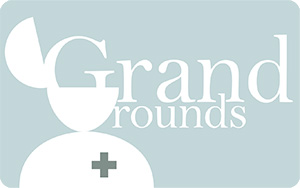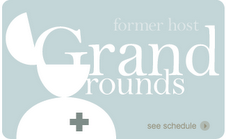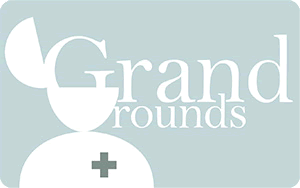November 8th, 2011 by Dr. Val Jones in Medblogger Shout Outs
2 Comments »
 As regular readers of the Better Health blog already know, I am opposed to health misinformation. In fact, I started this very blog because of my disappointment with the sheer volume of false claims, misleading stories, and pseudoscience actively promoted to patients.
As regular readers of the Better Health blog already know, I am opposed to health misinformation. In fact, I started this very blog because of my disappointment with the sheer volume of false claims, misleading stories, and pseudoscience actively promoted to patients.
It was my hope that gathering together key medical blogger “voices of reason” would promote health sanity on Google. You could argue that we’re tilting at windmills, but tilt we must – and I’m proud to say that our membership now includes contributions from the CDC, the American College of Physicians, Harvard Health publications, Diario Medico (Spain’s premier MD website) and over 100 independent bloggers who are standing with us in an attempt to provide smart health commentary to patients and providers alike.
And with that, let us begin our terrific Grand Rounds tradition (now in its eighth year – which in blog years is about 120) of highlighting this week’s best of the medical blogosphere… (And yes, that’s me with Mythbuster’s TV host Adam Savage, circa 2009).

Adam Savage & Dr. Val Jones
Myth #1: Coca-Cola will turn teenagers into homicidal maniacs.
Toni Brayer, M.D. of the Everything Health blog, finds the connection between drinking Coca-Cola and teenage violence laughable. Junk science is scarfed up by the media before the truth can get its wrapper opened. For more amusement, check out the newspaper headline on her blog: “Bananas As Good As Drugs For Treating HIV, Say Scientists.” Were these the scientists from the Planet of the Apes? Just sayin’.
Myth #2: Popular dietary supplements deliver on all their promises.
Jessica Berthold at ACP Hospitalist discovered a fascinating evidence graphic for vitamins and supplements during a presentation by Dr. Brent Bauer. “Which supplements work?” You may ask. Follow the bouncing bubbles. This site has an interesting, interactive graphic that illustrates both the number of Web search hits for health supplements like fish oil and garlic, and the evidence that the supplements work. (The bubble size illustrates # of hits, and the position of the bubble shows strength of evidence.)
Myth #3: Drinking cold water will make you lose weight.
Ryan DuBosar at the ACP Internist, offers the cold, hard truth about water and weight loss. Does drinking cold water really help you lose weight? It’s an urban myth with some truth to it. While it’s probable that drinking water before a meal induces satiation sooner, the number of calories that it takes to warm up a liter of ice water is fairly small and is unlikely to induce weight loss.
Myth # 4: Health screenings are not necessary.
Elaine Schattner, M.D. at Medical Lessons blog, is concerned about one-sided reporting on the downsides of mammograms. She reminds us that epidemiologists are not oncologists, and that the Dartmouth data may not offer the whole picture regarding cancer prevention and mammography. An ounce of prevention is worth a pound of cure – and for now, mammograms are our best hope.
Rich Fogoros, M.D. at the Covert Rationing Blog, deconstructs the latest prostate screening recommendations, arguing that what’s good from a public health standpoint isn’t necessarily what’s best for the individual. Prostate cancer screenings can save the lives of those whose aggressive cancer is detected early. The question is how to find the people who would benefit. Dr. Rich believes that people should be able to choose for themselves if they’d like to be tested, but worries that it will become exceedingly difficult to do so with the new USPSTF recommendations.
Myth #5: Just because two people have the same disease means they have a lot in common.
The Afternoon Napper (from The Afternoon Nap Society), an anonymous blogger with a rare chronic disease (intimal fibromuscular dysplasia) takes a look at the intricacies of interpersonal relationships in the patient advocate community. In the Napper’s post, “Just Because I Have The Same Disease As You That Doesn’t Mean I Like You—But That’s OK” we discover that having likes and dislikes in common can draw you closer than sharing the same disease or condition.
Myth #6 Sleep is not a key ingredient of a safe hospital stay.
Rita Schwab at Supporting Safer Healthcare, explains why disturbed sleep can make patients sicker. But better yet, she offers practical solutions for reducing noise in the hospital setting.
Myth #7: It’s ok to give enemas to anyone who is constipated.
Joel Topf, M.D. at the Precious Bodily Fluids blog explains why people with impaired kidney function could die if they’re given a Fleets (sodium phosphorous) enema. Citing some pretty horrific case studies, Dr. Topf notes: “Look at that phosphorous! A phosphorous over fifty is like a traffic accident, can’t tear your eyes away. Here’s a simple rule: If the medicine is supposed to go in the butt, don’t feed it to your patient.” Read the rest for some nightmare-inducing lab values.
Myth #8: Hydrochlorothiazide is a good anti-hypertensive medicine.
But wait, there’s more from our nephrologist blogger, Dr. Topf explains how a journal article from NEJM in 2008 changed the treatment of his patients with high blood pressure. He enthusiastically exclaims that:
“I avoid hydrochlorothiazide wherever possible. This usually requires re-jiggering a number of medications but a common switch will be to move patients from a list that looks like this:
- Lisinopril HCT
- Amlodipine
To a list that looks like this:
- ACEi CCB combination pill
- Chlorthalidone
This results in significant improvement in blood pressure control.”
A word to the wise who are managing high blood pressure: check out the ACCOMPLISH trial. It trumps ALLHAT.
Myth #9 Rapid fluid correction in kids with fever and impending shock (caused by infection) is the best way to save their lives.
Paul Auerbach, M.D. at Healthline reviews some interesting new data from a NEJM study suggesting that child mortality actually increases with aggressive IV fluid resuscitation. It is unclear if this remains true for other causes of shock, but as Dr. Topf explained earlier – one must think very carefully before putting large volumes of any fluids in any orifice (or vein) of any patient.
Myth #10: Teens are irredeemably bad drivers and cannot be helped.
Louise Galaska at the CDC Injury Center: Director’s View Blog offers some sobering statistics about teen driving, both regarding how dangerous driving can be (one in three teen deaths is caused by a motor vehicle accident) but in how much safer they can become when a graduated driver’s licensing system (GDL) is implemented. Research suggests that GDL systems are associated with reducing injury crashes by up to 40 percent in 16-year-old drivers. In the end though, there’s no substitute for an engaged parent.
Myth #11: Patient advocates will be quickly and easily integrated into the research design process.
Jessie Gruman, Ph.D., patient advocate extraordinaire at the Center for Advancing Health, is concerned about “patient-centered rhetoric.” In her post, “Getting the Patient’s Perspective in Research: Will PCORI Deliver on its Promise?” she describes the challenges of integrating patient advocates into the research design process.
“Including the patient perspective in research remains a foreign concept to most scientists and as a result, our views may be sought but ignored as the other participants continue doing business as usual. Jargon abounds.”
Jessie’s courage and candor are the reality check needed for PCORI’s success.
Myth#12 My doctor recommended an open hysterectomy because that would be best for me.
David Williams at The Health Business Blog interviews a surgeon who suggests that the type of procedure chosen is not always because it would be best for the patient, but rather more convenient for, or more familiar to, the surgeon. Check out all the hysterectomy options in this recent interview and podcast.
Myth #13: Cutting physician Medicare/Medicaid payments will help us do more with less.
David Harlow at the HealthBlawg describes some of the intricacies of upcoming legislative battles as congress and CMS try to negotiate a way to decrease healthcare spending by instituting “value-based modifier codes” to incentivize quality care while cutting physician reimbursement rates. Do not read this post if you are already depressed and confused. I numbered it “myth 13” for a reason!
Myth #14: Discount drug coupons save money.
Dr. Ed Pullen at Dr.Pullen.com argues that they may save money in the short-term – but watch out- it may be a ruse to keep patients from switching to less expensive generic drugs, and saving money long-term.
Myth #15: There’s a pill for everything.
Fisher Qua at the Health 3.0 Blog describes the creation of a new disease label (Female Sexual Dysfunction) primarily driven by companies hoping to discover and sell a new women’s blockbuster equivalent of Viagra. Funny how the label didn’t stick when there was no pill discovered to treat it?
Alright dear readers, that’s all the myths we can bust this week. Please check out Grand Rounds’ next host, the Sharp Brains blog so bring your A game!
March 22nd, 2011 by Dr. Val Jones in Medblogger Shout Outs
6 Comments »
 Welcome to this week’s edition of Grand Rounds, the Cliff’s Notes of the medical blogosphere. Each week a different medblogger reads through peer submissions and summarizes/organizes them all into one blog post (using their own unique structure or theme). Instructions for participation (and hosting) are here.
Welcome to this week’s edition of Grand Rounds, the Cliff’s Notes of the medical blogosphere. Each week a different medblogger reads through peer submissions and summarizes/organizes them all into one blog post (using their own unique structure or theme). Instructions for participation (and hosting) are here.
When I host Grand Rounds I like to organize the posts into emotion categories – kind of the way that movies are categorized into “drama, action, comedy, etc.” This achieves two goals: first, readers have the option of starting with their favorite emotion – maybe you need a “pick me up” or maybe you’re looking for something to get your blood pumping? Second, I get a general feeling for how my fellow bloggers are feeling these days. Judging from the volume of posts in each category, it seems that the majority of you are either surprised or outraged!
I organized the submissions by emotion category, and then listed them in order of submission (the first one was submitted earliest within each category). I hope you enjoy meandering through the blog posts with this structure!
OUTRAGE
 Some people spend years finding the correct diagnosis of their symptoms. Carolyn Thomas (of Heart Sisters blog) relays the exasperating story of a young woman who nearly became bankrupt searching for the cause of her disease. The answer was discovered with a blood test. You’ll have to read the full post to find out what the mystery diagnosis is!
Some people spend years finding the correct diagnosis of their symptoms. Carolyn Thomas (of Heart Sisters blog) relays the exasperating story of a young woman who nearly became bankrupt searching for the cause of her disease. The answer was discovered with a blood test. You’ll have to read the full post to find out what the mystery diagnosis is!
Bob Vineyard of Insure Blog is outraged by the decision of KV Pharmaceuticals to increase the fee for their injectable progesterone medication (Makena) from $20 to $1500 per dose. Apparently they increased the fee once the FDA granted them exclusive manufacturing rights. Read the full horror story here. Dr. Linda Burke-Galloway, an Ob/Gyn specialist, continues the refrain at her eponymous blog, stating that this price hike is tantamount to hijacking pregnant women. Dr. Peggy Polaneczky (at the Blog That Ate Manhattan) explains that reversing the price hike will depend on Big Insurance fighting off Big Pharma. “It’s like Goliath vs Goliath” she quips. Finally, Louise at Colorado Health Insurance Insider suggests that insurance companies have few options and will likely try to decline to pay for the medicine, or increase premiums to cover the cost. Either way, they will be on the receiving end of some very angry patient commentary.
Phil Hickey of Behaviorism and Mental Health blog is exasperated by psychiatry’s inherent monetary incentives to prescribe drugs over talk therapy. He suggests that psychiatrists have been reduced to “drug pushers.”
Jessie Gruman at the Prepared Patient forum takes issue with the New York Times’ recent blanket recommendation for patients to haggle with their physicians. Jessie suggests that the cost of healthcare is driven at a policy/regulatory level (rather than the individual patient) and that patients are often ill-equipped to know where to save on healthcare spending while physicians don’t even know how much tests and procedures cost. Big mess.
Yet more evidence that “platelet-rich plasma” is much ado about nothing has come out. Dr. Glenn Laffel (of the Pizaazz blog) explains that this expensive treatment (used by sports celebrities, and promoted by physicians looking to get rich quickly) isn’t worth the price tag.
Psychiatrist blogger Roy (at the ShrinkRap blog) points out the nuttiness of a proposed Florida Senate bill that would allow physicians to be arrested for asking patients about firearms. You must read this post to get the full dose of crazy regarding the proposed law.
Jacqueline (aka Laika at Laika’s MedLibLog) does an excellent job reviewing the hysteria and misinformation surrounding the recent Japanese earthquake. She argues that social media can be a double-edged sword, both helping and hurting in disaster situations. You should definitely check out her post’s reproduction of a nuclear fallout map, and its fake wave of radiation predicted to waft across the ocean and kill millions of Americans. Outrageous!
SURPRISE
 The ACP Hospitalist blog reviews a study suggesting that the most severely injured should not be treated in a nuclear disaster. I guess that “save the savable” is the protocol’s new mantra. Sister blog, the ACP Internist, describes a survey that concludes that most states are not prepared to handle a nuclear disaster. So – whether you’re severely or only mildly harmed by radiation, you won’t get optimal care? Eep.
The ACP Hospitalist blog reviews a study suggesting that the most severely injured should not be treated in a nuclear disaster. I guess that “save the savable” is the protocol’s new mantra. Sister blog, the ACP Internist, describes a survey that concludes that most states are not prepared to handle a nuclear disaster. So – whether you’re severely or only mildly harmed by radiation, you won’t get optimal care? Eep.
There’s a lot you can do with Microsoft’s Kinect video console. Gene Ostrovsky at the Medgadget blog reports on a novel use for the Xbox system: helping the visually impaired navigate indoors. Check out the whole story here.
Did you know that the medical treatment you receive may depend upon variables such as where you live and how many hospital beds are in your area? ePatient Dave (at the e-patients.net blog) describes geographical practice variation, and what patients should know about it.
After a breathtaking review of the short history of medical apps, Dr. Felasfa Wodajo (at OrthoOnc blog) explains what he sees as their bright future. Among his predictions is the idea that hospitals and provider institutions will become the prime distributors of medical apps going forward.
Dr. Rich Fogoros (at the Covert Rationing Blog) explains that screening young athletes for heart disease would be cost effective if EKGs could be done at Walmart for $10. He uses the analogy of smoke detectors, which reduce the risk of death by fire: we have them because they’re affordable, and paid for by the individual (even if they save very few lives on a national scale).
Dr. Michael Kirsch (at MD Whistleblower blog) wonders if hospitals vying for wealthy patrons with hotel-like facilities is much different than pharmaceutical companies offering free samples of their drugs to people. Both are trying to increase their customer base, but no one criticizes hospitals for their activities. Hmmm…
Paul Levy (at his new Not Running A Hospital blog) explores the complex problem of personal bias, inappropriate inferences, and emotional thinking in medical decision-making. It’s a wonder anyone makes a smart decision, ever!
Dr. John Mandrola (at the Dr. John M blog) offers the surprising advice that patient education is the most effective treatment for atrial fibrillation (not drugs, ablation, or procedures of any kind). Check out his 12 tips for people with AFib.
Dr. Tony Chen (of the FDAzilla blog ) points out that the medical device approval process may not be safe. It’s a bit of a catch 22 problem though… If the approval process is too lenient, you end up with too many recalled products. If the process is too strict, you end up stifling medical innovation and lose all its benefits.
Jeffrey Seguritan (at Nuts For Healthcare blog) explains why high risk health insurance pools have not solved the “pre-existing condition” problem. People can’t afford higher premiums, even if the government helps to subsidize the costs. Plus there’s the issue of not knowing how to get into one of these pools, or wanting to wait 6 months for entry. Surprisingly few people are taking advantage of what we all thought was a great way to help the sick.
GRIEF
 Losing your life partner can be emotionally crippling. Barbara Kivowitz explores the process of grieving, including this powerful quote from a widower: “People have told me that I should be nourished by my memory of our relationship. I cry because the despair, the yearning ache I suffer, is just not sated by remembering the way in which she and I loved any more than my hunger is satisfied by remembering a delicious meal I once ate.” Read the whole story at her blog, In Sickness And In Health.
Losing your life partner can be emotionally crippling. Barbara Kivowitz explores the process of grieving, including this powerful quote from a widower: “People have told me that I should be nourished by my memory of our relationship. I cry because the despair, the yearning ache I suffer, is just not sated by remembering the way in which she and I loved any more than my hunger is satisfied by remembering a delicious meal I once ate.” Read the whole story at her blog, In Sickness And In Health.
At 33 Charts, Dr. Bryan Vartabedian reflects on the death of a child with mitochondrial depletion syndrome. At the child’s funeral, Dr. V was moved as he recalled how much he learned from the charming 4-year-old.
When it comes time to make end-of-life decisions for loved ones who are unable to do so, it’s very reassuring to know what they want. Dr. Ramona Bates (at Suture For A Living) describes the relief she felt in caring for her mother (during her mom’s final days) because they had previously discussed her advanced directives. There’s a lesson here for all of us.
South African surgeon, Bongi Taverner (at Other Things Amanzi blog), relays a tragic story of a missed diagnosis that still haunts him. A young man was shot in the abdomen and died because the surgical team couldn’t tell that the bullet had pierced his small intestine and didn’t operate on him soon enough.
In this touching, dark-humored post, Beth Renzulli (at the Happy Internist blog) writes an ode to a colon cancer patient’s omentum. It’s hard to blend sadness with awe, and Beth does so beautifully.
Dr. Elaine Schattner (of the Medical Lessons blog) explores the role of empathy in the wake of the recent Japanese earthquake. She draws inspiration from Susan Sontag’s book, “Regarding The Pain Of Others” and encourages us to take the time to empathize with those who are suffering.
DEPRESSED
 Fisher Qua of the Healthiest State In The Nation Blog gets the sense that most companies believe that employee wellness programs are a waste of time because the companies themselves are unwell. Incentivizing people to make long-term healthy lifestyle choices can be an uphill battle, but before we all give up – check out Fisher’s ideas for turning this around.
Fisher Qua of the Healthiest State In The Nation Blog gets the sense that most companies believe that employee wellness programs are a waste of time because the companies themselves are unwell. Incentivizing people to make long-term healthy lifestyle choices can be an uphill battle, but before we all give up – check out Fisher’s ideas for turning this around.
David Harlow (of HealthBlawg) explains why it’s cheaper for most companies to ignore some HIPAA rules (like data privacy and protection) and take the risk that they’ll be found in violation by the exceedingly small government enforcement task force. David wonders: “Will HIPAA enforcement become like trading emission credits?” Meanwhile, fellow attorney Bob Coffield (at Health Care Law Blog) reports that the Office of Civil Rights has requested a 5.6 million dollar increase in the 2012 HIPAA enforcement budget. Is that a drop in the bucket?
FRIGHTENED
 Do you know what radiation exposure would actually do to your body? Dr. Paul Auerbach (at the Medicine for the Outdoors blog at Healthline) explains what causes radiation damage, how to decontaminate yourself, and how to reduce or prevent damage with potassium iodide. Dr. Toni Brayer (from Everything Health blog) explains that potassium iodide is no panacea, and that it’s not necessary for Americans to take it prophylactically for protection against possible radiation from Japan. The chance of radiation reaching our shores is basically zero.
Do you know what radiation exposure would actually do to your body? Dr. Paul Auerbach (at the Medicine for the Outdoors blog at Healthline) explains what causes radiation damage, how to decontaminate yourself, and how to reduce or prevent damage with potassium iodide. Dr. Toni Brayer (from Everything Health blog) explains that potassium iodide is no panacea, and that it’s not necessary for Americans to take it prophylactically for protection against possible radiation from Japan. The chance of radiation reaching our shores is basically zero.
The Happy Hospitalist (at the blog of the same name) delves deep into MedPAC (Medicare Payment Advisory Commission) analysis documents only to discover that most hospitals lose money treating patients with Medicare insurance coverage. Scarier still is the fact that predicted profit margins can be improved by only 3% if perfect execution of care is achieved. These facts may result in a deeper divide between the quality of care for the rich versus poor in America.
JOYFUL
 Family physician Ed Pullen (at his eponymous blog) discusses what “carpe diem” might mean to a patient. He suggests that seizing the day may boil down to this: “Make intentional decisions, and take purposeful steps to make today better than it would be if you passively let today slip by without being cherished.”
Family physician Ed Pullen (at his eponymous blog) discusses what “carpe diem” might mean to a patient. He suggests that seizing the day may boil down to this: “Make intentional decisions, and take purposeful steps to make today better than it would be if you passively let today slip by without being cherished.”
David Williams (at Health Business Blog ) interviews Jeannie Lindheim (a motivational writer and founder of a hospital clown troupe), about using improvisation to improve communication, physician listening skills and patient empowerment in healthcare.
Mary Pat Whaley (at the Manage My Practice blog) describes a new type of retirement community that combines healthcare, a cap on costs (so the members are not bankrupted), and access to an onsite nursing facility if needed. Her parents are enjoying all this plus hot meals, a swimming pool, games, fitness programs, and entertainment. Sounds like a great solution for aging parents on a fixed income.
Dr. Mike Sevilla, formerly known as Doctor Anonymous, has completely outed himself. He will no longer blog semi-anonymously, but will use his real name in all his future writing. He has a new blog now called “Family Medicine Rocks” – a name suggestive of jubilation and enthusiasm for his chosen specialty.
Kim McAllister (of Emergiblog) describes why she’s so glad that she continued her nursing education. She writes: “Remember the bad old days when it seemed like ADN = BAD! BSN = GOOD! MSN = BETTER! DNP = SAINT! PHD = GOD! LOL!… IF you are looking for a bigger paycheck or a huge pat on the back and a sparkle in the eye of your employer, well, you won’t find it by adding alphabet soup after your name… The immediate external rewards are few. The internal rewards are innumerable…” Check out her post to see why Kim has decided to study for an MSN.
LUSTFUL
 Have you ever been physically attracted to a friend? This kind of friendship – where there is mutual attraction, but romantic entanglement would be damaging or inappropriate – is not uncommon. Will Meek suggests that we give this kind of relationship a name: “fiery friends.” Find out how to navigate fiery friendships successfully at Dr. Meek’s blog.
Have you ever been physically attracted to a friend? This kind of friendship – where there is mutual attraction, but romantic entanglement would be damaging or inappropriate – is not uncommon. Will Meek suggests that we give this kind of relationship a name: “fiery friends.” Find out how to navigate fiery friendships successfully at Dr. Meek’s blog.
REPULSED
 Tuberculosis is a nasty infection. Dr. Sumer Sethi (at Sumer’s Radiology Site) describes a rare case of chronic arachnoiditis caused by a tubercular infection swelling into the foramen magnum, resulting in cervical spine symptoms! Check out the gory MRI images. Ew… Poor patient!
Tuberculosis is a nasty infection. Dr. Sumer Sethi (at Sumer’s Radiology Site) describes a rare case of chronic arachnoiditis caused by a tubercular infection swelling into the foramen magnum, resulting in cervical spine symptoms! Check out the gory MRI images. Ew… Poor patient!
Dr. Allen Roberts (of GruntDoc blog) managed to totally gross out a medical student during a shoulder reduction procedure in the ER. Well done, sir. Well done!
I AM STUMPED
I have no idea how to categorize this post by Dr. Shock (at Dr. Shock MD, PhD blog). He describes the neural basis of cognitive and emotional empathy… in a clinical, unemotional way. How.. er… ironic?
And there you have it! I hope you’ve enjoyed this edition of Grand Rounds, please submit your posts to next week’s host, Dr. Mike Sevilla (the blogger formerly known as Doctor Anonymous), at FamilyMedicineRocks.com. Please go to the website for instructions on submission.
Cheerio!
 As regular readers of the Better Health blog already know, I am opposed to health misinformation. In fact, I started this very blog because of my disappointment with the sheer volume of false claims, misleading stories, and pseudoscience actively promoted to patients.
As regular readers of the Better Health blog already know, I am opposed to health misinformation. In fact, I started this very blog because of my disappointment with the sheer volume of false claims, misleading stories, and pseudoscience actively promoted to patients.


 Dear Medical Bloggers – Better Health is pleased to be hosting Grand Rounds on November 8th, 2011. Please submit your best post to us via email to dryden.epstein@getbetterhealth.com
Dear Medical Bloggers – Better Health is pleased to be hosting Grand Rounds on November 8th, 2011. Please submit your best post to us via email to dryden.epstein@getbetterhealth.com
 Welcome to this week’s edition of Grand Rounds, the
Welcome to this week’s edition of Grand Rounds, the  Some people spend years finding the correct diagnosis of their symptoms. Carolyn Thomas (of
Some people spend years finding the correct diagnosis of their symptoms. Carolyn Thomas (of  The
The  Losing your life partner can be emotionally crippling. Barbara Kivowitz
Losing your life partner can be emotionally crippling. Barbara Kivowitz  Fisher Qua of the
Fisher Qua of the  Do you know what radiation exposure would actually do to your body? Dr. Paul Auerbach (at the
Do you know what radiation exposure would actually do to your body? Dr. Paul Auerbach (at the  Family physician Ed Pullen (at his
Family physician Ed Pullen (at his  Have you ever been physically attracted to a friend? This kind of friendship – where there is mutual attraction, but romantic entanglement would be damaging or inappropriate – is not uncommon. Will Meek suggests that we give this kind of relationship a name: “f
Have you ever been physically attracted to a friend? This kind of friendship – where there is mutual attraction, but romantic entanglement would be damaging or inappropriate – is not uncommon. Will Meek suggests that we give this kind of relationship a name: “f Tuberculosis is a nasty infection. Dr. Sumer Sethi (at
Tuberculosis is a nasty infection. Dr. Sumer Sethi (at  Grand Rounds
Grand Rounds







